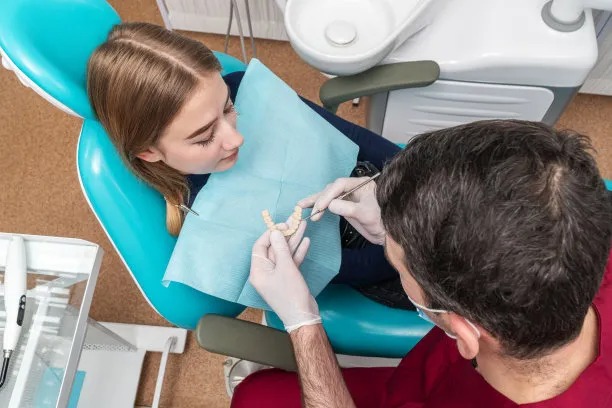Extracting a Tooth Understanding the Process Recovery Tips and Aftercare for a Smooth Experience
Summary: Extracting a tooth can seem daunting, but understanding the process, recovery tips, and aftercare can smoothen the experience significantly. This article explores the various stages of tooth extraction, from the initial consultation to the actual procedure and finally the essential aftercare. Well delve into what to expect during the extraction process, how to manage pain and speed up recovery, and provide tips for post-extraction care. Understanding these aspects will help alleviate anxiety and facilitate a seamless transition through tooth extraction, ensuring a better overall dental experience.
1. Understanding the Tooth Extraction Process

The first step in any dental procedure is understanding why extraction is necessary. Tooth removal typically occurs due to severe decay, periodontal disease, or overcrowding. A dental professional will evaluate your condition through X-rays and thorough examinations to determine if extraction is the best solution.
Once extraction is deemed necessary, the dentist will discuss the procedure with you, explaining what will happen at each stage. This discussion helps in alleviating anxiety by informing you of the steps involved, from anesthesia to the actual removal of the tooth. Knowing the workflow gives patients a clearer perspective on the process.
During the procedure, the dentist will administer local anesthesia to numb the area. For more complicated extractions, sedation may be used. They will then carefully extract the tooth using specialized tools, ensuring as much comfort as possible during the process. It can be helpful to discuss any concerns beforehand to handle potential anxiety effectively.
2. Preparing for the Tooth Extraction
Preparation is key for a successful tooth extraction experience. Start by following your dentists pre-operative instructions, which may include dietary changes or medication adjustments. For instance, avoid blood thinners if advised, as these can complicate the extraction process.
Additionally, arrange for someone to drive you home, especially if you will receive sedation. Having a trusted companion can alleviate stress and ensure you have someone to support you post-procedure. Prepare your home environment for recovery by ensuring you have a comfortable place to relax once you return from the appointment.
Lastly, considering bringing a book, music, or some form of distraction can make the waiting period and recovery post-extraction more enjoyable. Knowing you have tools to distract yourself can cut down any anxiety and make the experience more manageable.
3. Managing Recovery After Extraction
Recovery is an integral part of the tooth extraction process, and managing it effectively can significantly enhance your healing experience. After the extraction, it is common to experience swelling and discomfort. Applying ice packs to the side of your face for the first 24 hours can help reduce swelling and numb discomfort.
It’s essential to take prescribed medications or over-the-counter pain relievers as directed. This helps control any pain you may experience post-surgery. Additionally, sticking to a diet of soft foods like yogurt, applesauce, and soups during the initial recovery period can prevent irritation and discomfort in the extraction site.
Hydration also plays a critical role in recovery. While maintaining good hydration is advised, it’s essential to avoid using straws for at least a week, as the suction can dislodge blood clots and delay healing. Following these recovery tips diligently will promote quicker healing and a smoother recovery experience.
4. Essential Aftercare Tips for Smooth Healing
Aftercare can particularly affect your recovery after a tooth extraction. Keeping the extraction site clean is crucial; however, it’s important to avoid brushing near the extraction site for at least 24 hours. After that, gently rinsing your mouth with warm salt water can promote healing and reduce the risk of infection.
Additionally, it is vital to monitor for any complications like excessive bleeding or signs of infection, such as fever or increased pain. If any troubling symptoms arise, don’t hesitate to contact your dentist for guidance. Staying vigilant about your health post-extraction can make a significant difference.
Another key aftercare tip is to avoid smoking or strenuous activities for at least 48 hours as these can hinder the healing process. Allow your body the time it needs to heal properly. Create a recovery plan involving rest, hydration, and healthy food choices to facilitate the best recovery possible.
Summary:
In conclusion, understanding the tooth extraction process is critical for a comfortable experience, from preparation to aftercare. The right knowledge about what to expect, how to handle recovery, and effective aftercare strategies can significantly reduce anxiety and contribute to a smoother healing process. Trust in your dental professional, follow all outlined instructions, and your experience can be both positive and successful.
This article is compiled by Vickong Dental and the content is for reference only


